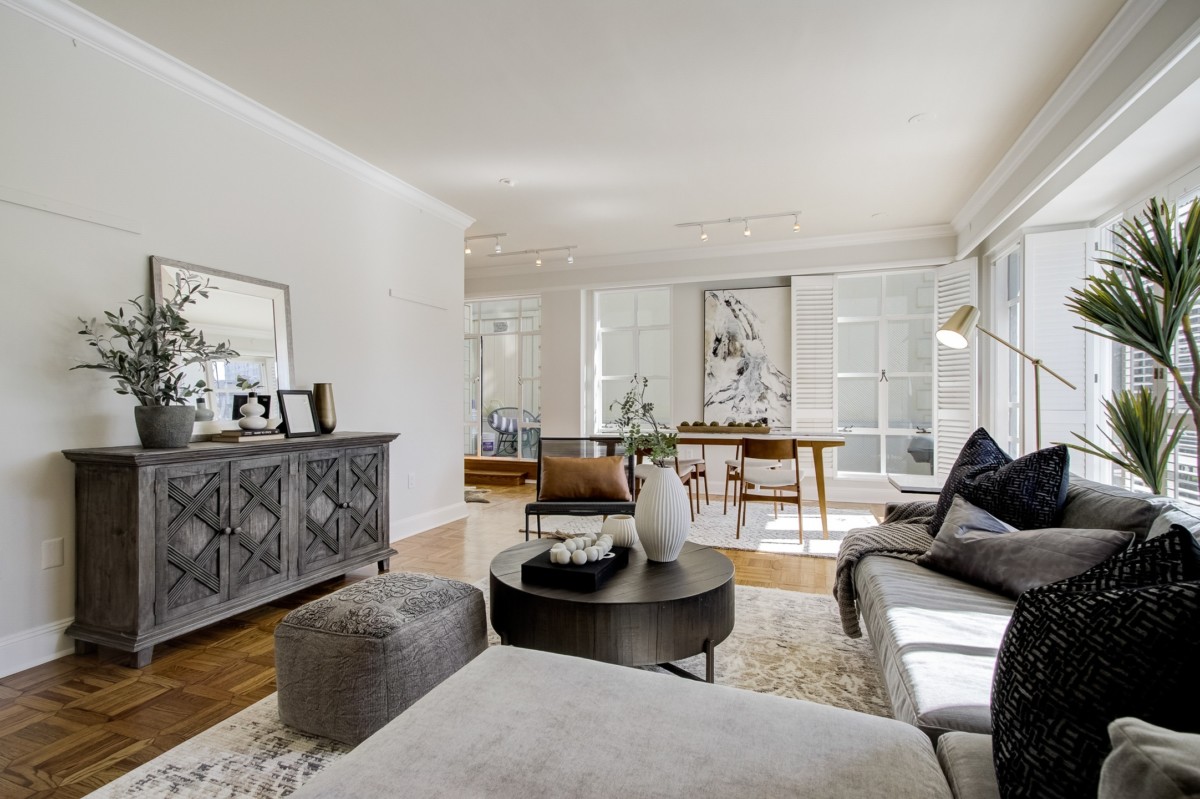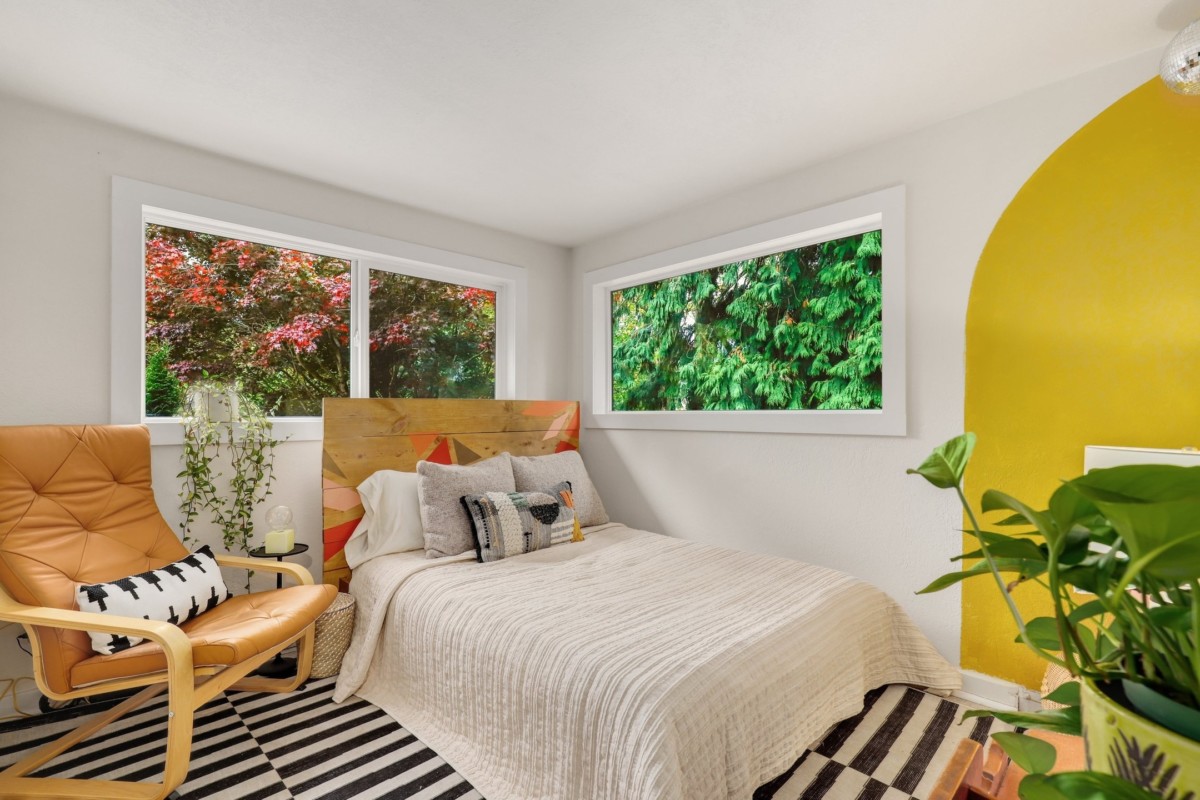Sustainable home decorating doesn’t have to be intimidating. Whether it’s by making small eco-friendly choices to reduce plastic consumption or making the switch to non-toxic products, these changes in your home will help reduce your carbon footprint. We reached out to experts across North America from Los Angeles, CA, to Toronto, ON, for their best sustainable home decor ideas to help you create a stylish, eco-minded space you’ll love. Read on and get inspired.

Shop secondhand
1) Thrifting for home decor is eco-friendly and wallet-friendly. My favorite home goods gold mines are Facebook Marketplace, Habitat for Humanity’s Re-Store, and local cause-affiliated thrift shops (like the Humane Society), which often have better quality items than the average thrift shop. –Savannah Refillery
2) Confine your home decor project in small areas and check your local Freecycle / Buy Nothing group for wishlist items. People want to declutter and rotate things in their homes, so it’s going to be a win-win situation for you and your neighbors. When you score pre-owned items for your space from your neighbor (or vice versa), the items stay away from landfills, and decluttering tasks become more rewarding. –Fafafoom Studio
3) Facebook Marketplace and estate sales are my favorite places to find secondhand furniture and home decor. I’ve found everything from fun, colorful vintage pieces to sleek minimalist pieces. Buying secondhand is an environmentally friendly option that works for anyone’s style and budget. –Strolling Through Life
Create an energy-efficient home
4) Energy-efficient, operable double-glazed windows can be one of the best investments you can make for your health and that of our shared home, Earth. Airtight windows better insulate your home, lowering your energy bill and external noise pollution. Indoor air is often much more polluted than outdoors, so be sure to open operable windows even a few minutes a day to let in the proverbial breath of fresh air – no filters are needed with this technique. –Innergized Designs
Breathe new life into your home by using non-toxic, eco-friendly products
5) Indoor air can be up to 100 times more polluted than outdoor air, so choosing low-VOC products and non-toxic finishes and furnishings is essential for human and planet health. Some affordable low-VOC and non-toxic home products I love include Loomy rugs, Bioshield paint, and Sabai sofas. –Holistic With Heidi
6) When choosing products to clean your home, look for the certifications like the EPA’s “Safer Choice” label. Many companies can claim “organic” or “non-toxic” ingredients, but these words are marketing terms that have no regulation. If you have concerns about exposing your pets and loved ones to harsh chemicals and care about preserving the environment, look for these labels as they guarantee that the ingredients are of low toxicity and are as safe as you can get in an effective cleaning product. –PristineGreen Cleaning
7) I always suggest selecting products that tackle these two goals – being environmentally friendly and don’t have a negative impact on the well-being of people. For example, using low to zero-VOC mold-resistant interior paints, looking for products made of locally sourced ingredients, selecting recyclable materials that also have recycled content in them. Many sustainable products (recycled glass countertops, reclaimed wood, etc.) are unique. They can add character to your interior space and be a great conversation starter. –Katia Chavez Design Studio
Invest in quality pieces
8) Look for the history behind the products you buy. All of my favorite pieces have unique stories behind how they’re made, and that makes me so much more connected to them. For example, I have a lovely patchwork quilt on my couch. This quilt is handmade by artisans in India, using recycled cotton saris and a traditional stitching method called Kantha. By relying on cultural traditions to make the quilt, it’s good for the planet and for a small community of makers. Not only this, but the bright colors, comfortable fabric, and delicate stitchwork always elicit a compliment from guests in my home. –Lucia’s World Emporium
9) When designing with a sustainable focus, ensure that you research high-quality, durable pieces for your home that will last for decades. Similar to fast fashion, fast furniture contributes to global waste more than you realize. By saving for investment pieces that will last the test of time and style, you can help reduce your environmental footprint. –Moonlit Interiors
Choose multifunctional decor pieces
10) Opt for multifunctional pieces that serve a purpose but at the same time can look amazing when not in use. For example, a wooden bowl can be used to hold your fruit or vegetables, but when it’s not being used, it can look amazing on your shelf or styled on a coffee table. Even branches from a tree would look breathtaking styled in a thrifted vase in your entryway. –Decor With Amor
Repurpose and upcycle household items
11) Reduce your plastic footprint and replace plastic bottles with repurposed jars or vintage glass bottles. Refill your cleaning and personal care products at your local refill shop and stock up on bulk dry foods at your local co-op. These jars are not only beautiful on display, but they also give your home a clean, minimal look. –Refillery LA
Give old furniture a makeover
12) When you’re ready to refresh your home’s interior, consider new upholstery. Reupholstery can give your favorite furniture a second life and an updated, custom look. Plus, by not buying new furniture, you eliminate the need for manufacturing, shipping and keep your furniture out of the local landfill. –Ackerman & Sons Furniture Workshop
Go green by incorporating house plants
13) Try styling your space with lots of plants. This is a great way to add character and keep the room feeling refreshed (and many plants even purify the air around you). I love thrifting for planters and vases for flowers— it keeps costs to a minimum and makes my space feel unique and inviting. –For Living
Opt for recycled, recyclable, or sustainable materials
14) Use products made for sustainable materials like bamboo sheets and mattresses, wall tiles made from recycled cardboard, and add to your décor with real live plants versus faux plants. You can also opt for eco-friendly paint with zero VOCs (volatile organic compounds), sustainable flooring made from cork, maple, or bamboo, and changing out your light bulbs to energy-efficient LEDs. –Ocean Lane Interiors
15) Choose natural materials when decorating sustainably. These are materials that can go back into the earth or be recycled easily, like wood, metals, and pottery. All three of these materials are durable and add coziness to any style. –The Purposeful You
16) When choosing any materials for the home, purchasing quality, durable, and sustainable materials is key. Ensure that purchases are ‘fit for purpose’ and will last you a lifetime (or as long as they possibly can). It costs you and the environment more in the long term to replace faulty, poor-quality items than spending a little more on that ‘forever’ item you love. Remember – buy well, buy once, make it last. –Isabelle Margarita Home
Always do your research
17) When it comes to furniture and home goods, don’t assume that “natural” materials are always better for you or the environment than manmade materials. While some plant-based materials, especially organic ones, can be better for the planet than some synthetic fibers, animal-based materials like wool, leather, silk, fur, and down do a lot more damage than their carefully engineered counterparts; and that’s before you consider other issues like animal cruelty and abuse of workers. For example, according to research published by the Boston Consulting Group, cow leather is the single worst material for the environment, with an overall impact several times greater than standard faux leather. Along the same lines, research published by Nike found that cow leather had roughly seven times the climate impact of faux leather. Likewise, wool had approximately ten times the climate impact of acrylic (a warm, wool-like material used to make fuzzy blankets and upholstery). When in doubt, avoid animal-based materials and look for products labeled as “vegan,” and you get bonus points if the item is made from plants or recycled (and recyclable) materials. –Harmless Studio




 United States
United States Canada
Canada